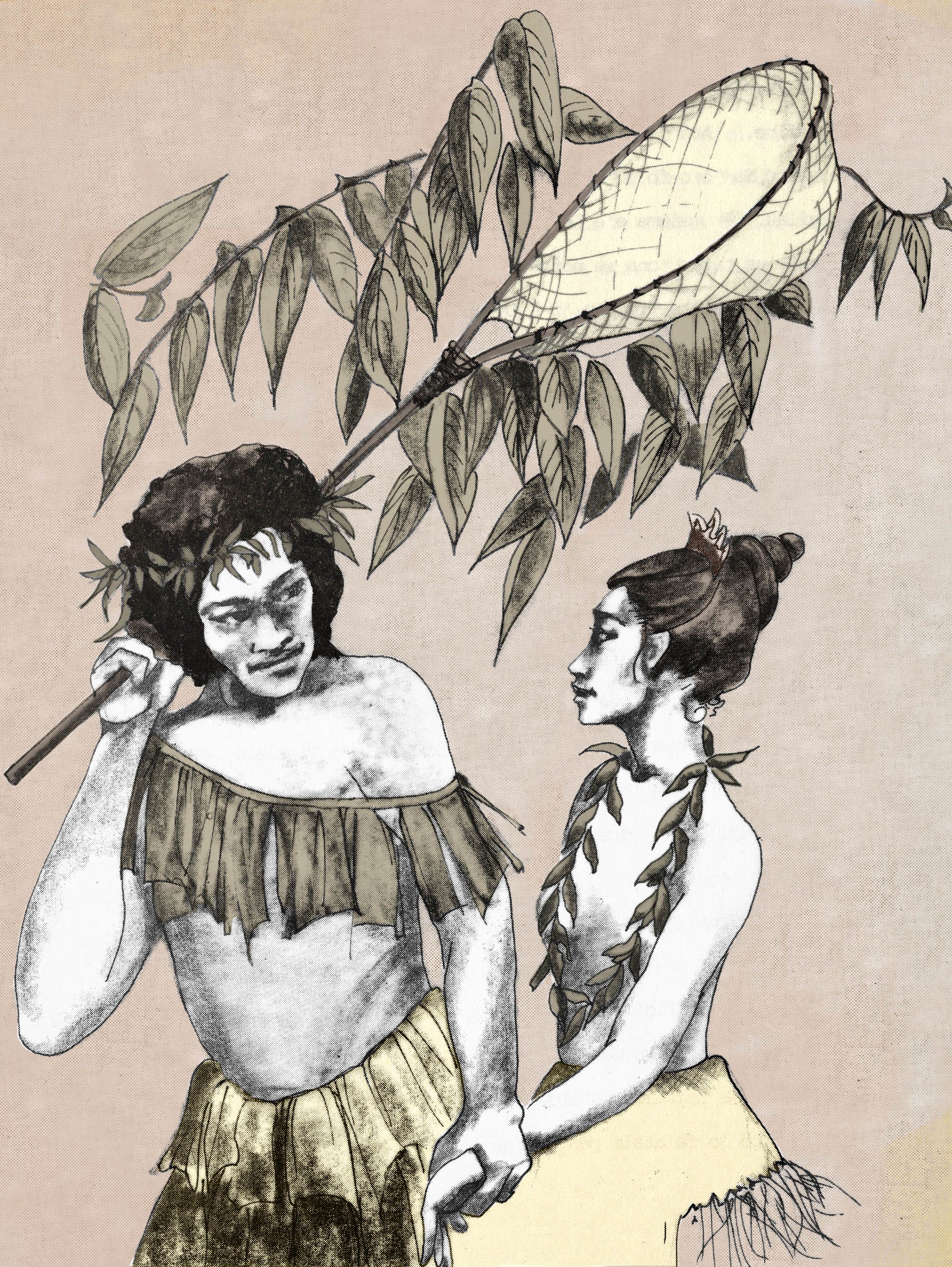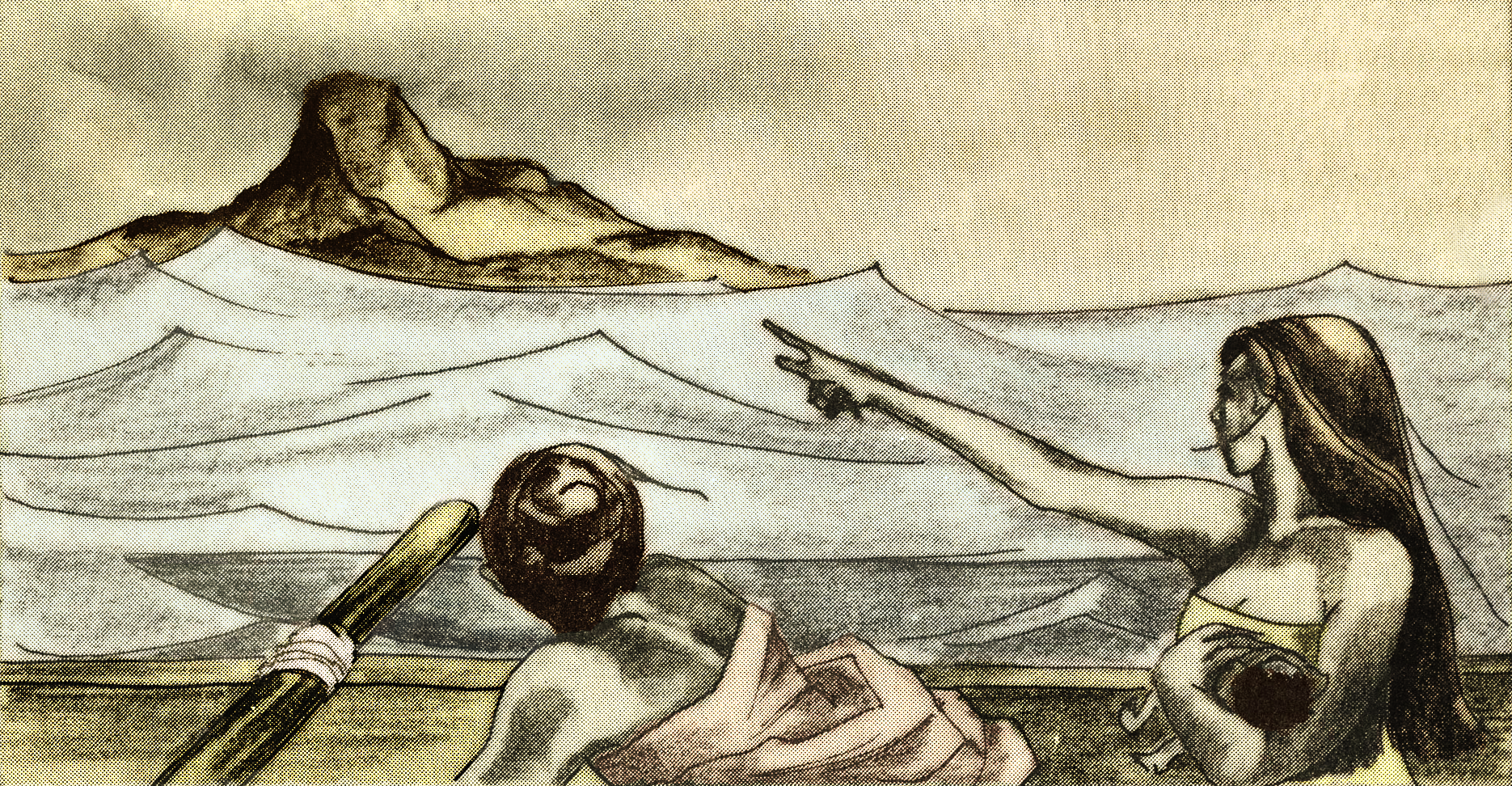
GAFA 0 LEALALI
10. Na usu Pili le So’opili ‘1 ā Tuamanulele i le nimo. Fa’ae’e le gafa, ‘o ‘Apa’au’ula.
11. Na usu ‘Apa’au’ula ‘i ā Ufiufi. Fa’ae’e le gafa, ‘o Lealali.
12. Na usu Lealali ‘i ā Sinalegogo, le afafine o Leutelele’i’ ite, i Falefā. Fa’ae’e le gafa, ‘o Sālevaonoono ma Sausi.
12a. Toe usu Lealali ‘i ā Malelegaoleto’elau, le afafine o Tui Sāfua, i ‘Iva. Fa’ae’e le gafa, ‘o Tupa’imatuna, Tupa’ilelei, ma Tupa’i- sina. Ona fai lea o le tofiga a Lealali ‘i lana fānau: ‘0 Sālevaonoono ma Sausi e nonofo ma le pule i Leulumoega; ma ‘o le’ā pule lava lā’ua i le Tui A’ana e pau mai lava i_Falealupo. ‘A ‘o
Tupa’imatuna ma Tupa’ilelei ma Tupa’isina’o le’ā lātou fai ma ali’i o Savai’i. Ona mana’o_mai lea o Laufafaetoga ‘i ā Tupa’ilelei’ina ‘ua ‘avatu tala o le mānaia. Ona sau ai lea o Laufafaetoga. Sā
ia va’ai atu ‘i āTupa’ilelei ‘ua leaga,ona ia nofo ai lea i lona uso ‘o Tupa’imatuna.
13. Ona fa’apea lea ole ‘upu a Laufafaetogai le tasi aso, “Na poloa’i mai lo’u tamā ‘ou te fo’i atu ‘i Toga pe’ā o’o ‘i o’u mālama.”
Ona alu lea o le fōlauga, ‘ae ‘ua si’ i ‘i Fiti. Ona fānau ai lea o Laufafaetoga. ‘Ua fa’aigoa lea o lea tama ‘i ā Va’asiliifiti.
Ua sola Laufafaetoga mai a Tupa1 imatuna, ma ‘ua nofo le tama’ita’i
i ā Lautala, le ali’i Fiti. Fa’ae’e le gafa. Tasi ‘o Ututauofiti,
tasi ‘o Tauaofiti, ma le_tasi ‘o Legaotuitoga. ‘0 ia tama na ‘autū
imx~ w uaiua ai ‘a’ai e tolu: ‘o Matāutu. Sāt.ana. ma
-i– – – Laufafaetoga e toe_o Matautu, Sataua, ma Salega. Ona tonu lea i a
fo 1 ane_’i lona to’alua Samoa. ‘Ua sāu_. sāuni le
malaga ma ‘ua lā fōlau _ —_ ___ 1U, , i Sāmoa, ‘ae’ua tō le fafine. Ona fotu atu
lea ‘i Sāmoa ‘a e fānau loa Laufafaetoga le teine. Ona fa’aigoa lea o le teine ‘ i _ā Fotuosāmoa, ‘o Sāfotu lea. Onv. .«=«
Ona usu lea o Va’asiliifiti ‘i ā Mālelegasavai’ i , le tama’ita’i Tufutafoe.
Fa’ae’e le gafa: Tasi ‘o Va’asiliifiti. ‘Ua toe usu Va’asiliifiti ‘1 ā Fe’egaga, le tama’ita’i Sāgana,_’ātoa ma Fe’easoa, le tama’i- ta’i Sāle’imoa. ‘Ua nofolua. Ona fānau lea o le tama a le fafine Sāgana. ‘Ua igoa ‘i ā Funefe’ai. _Fānau fo’i le tama’ita’i Sāle’imoa. ‘Ua igoa lana tama ‘i a Lāfai.
15. Usu Lāfai ‘i ā Mata’uiatali, ‘o le fafine Falese’elā. Fa’ae’e le gafa: Tasi ‘o Fotulāfai , ‘o Sāfotulāfai_lea. Tasi ‘o Talalāfai, ‘o ‘Iva lea. Tasi ‘o Tupa’iloa, ‘o Faleālupo lea. Tasi ‘o Loloa, ‘o Sāfe’e lea. Tasi ‘o Tupa’ifa’aulu, ‘o Neiafu lea. _Tasi ‘o Tupa’ilefao, ‘o Asau lea. Tasi ‘o Mul i ‘ agalāfai, ‘o Sālemuli’aga lea.

16a. Toe usu Lāfai ‘i a Mata’uifatu, ‘o le uso o Mata’ uiatal i. Fa’ae’e le gafa: ‘o Va’asilitamaolepō.
17- Usu Va’asilitamaolepō ‘i ā Sinaletuna ‘ātoa ma lona uso ‘o Sinale- ‘imoa, ‘o afafine o Poluuli i Sāle’imoa. Fa’ae’e le gafa: ‘o Lāfailetaua le tasi fafine o le falelātaua i Palauli lea, ma Lāfaitupa’itea. le tama a le tasi fafine. ‘0 Te igoa lenei na
‘autū ai Sātupa ‘ itea.
16- Usu Lāfaitupa’ itea ‘i se fafine Sāmatau. Fa’ae’e le gafa: ‘o
Tevalefua.
19. Usu Tevalefua ‘i ā Pipi 1 imatualima i Saga. Fa ae
Fa’ae’e le gafa: Tasi ‘o Mul i’agafaitagata. Tasi ‘o Muli’agalafaiaitu.
Mai ā Taoa,
toa ta’uta’ua, ma ‘o le atali’i-o-le-atali’i o
(saute) 1 o le _ _
toga
talu ai ‘o mātū sa matuā ‘auai i lenei taua ma le loto ‘atoa, ‘a ‘o
tāne o le itū ‘i toga, tonu po ‘ona ‘o feso’ota’iga a o lātou ‘āiga, sā nofonofo ai lava ‘ilātou.

Here, Brother Fred Henry writes about the historical political organization of Savai’i, where Lealali and his descendents emerge to hold permanent primacy in leadership and geographical organization. The genealogy is the central, universally understood organizing principle.
It has already been stated how Pili came from Manu’a to Savai’i, where he settled in A’opo. One of his descendants is Alali or Lealali. It is to Lealali that many traditions point as being the progenitor of those chiefs who founded the principal villages of Savai’i and gave them the first political organization.
Genealogy of Lealali: Pili le So’opili married Tuamanulele i le nimo. To them was born Apa’au’ula. Apa’au’ula married Ufiufi. Born to them was Lealali.
Lealali married Sinalegogo, the daughter of Leutelele’i’ite in Falefa. Their children were Salevaonono and Sausi.
Lealali married again, this time to Malelegaoleto’elau, the daughter of Tuisafua in Iva. To them were born Tupa’imatuna, Tupa’ilelei, and Tupa’isina.
Then Lealali gave to his three sons these appointments: Salevaonono and Sausi shall have authority over Leulumoega; they shall rule over the Tuia’ana name and even as far as Falealupo. But Tupa’imatuna, Tupa’ilelei, and Tupa’isina shall go to Savai’i to be chiefs there. Laufafaetoga longed to have Tupa’ilelei for her husband, since she had heard reports that he was very handsome. When Laufafaetoga arrived and saw that, to the contrary and to her surprise, Tupa’ilelei was rather ugly, she decided to marry his brother Tupa’imatuna, instead.

This image no doubt depicts the moment when Laufala gives birth to Salofu when in sight of Samoa where she is returning home to her Samoan husband Tupa’imatuna after travelling to Tonga and Fiji
One day Laufafetoga said, “Before I left, my father bade me to return to Tonga to be delivered of my child.” Then a ship set sail for Tonga, but was driven to Fiji instead. Here, Laufafa soon gave birth to a child. This boy was-named Vaasili-i-fiti.
Then, Laufafa ran away from Tupa’imatuna and lived with Lautala, a Fijian Chief. Born to them were Ututauofiti, then Tauaofiti, and Legaotuitoga. From these boys originate the town names of Matautu, Sataua, and Salega. Laufafa finally decided to return to her Samoan husband. So they got ready and sailed towards Samoa, but the woman was with child. Just when Samoa hove in sight, she gave birth to a girl. To this girl they gave the name of Fotuosamoa, i.e Safotu.
Thereupon Vaasiliifiti married again, two ladies at once, Feegaga from Sagana and Feeasoa from Saleimoa. The Sagana lady gave birth to a boy named Funefeai. The Saleimoa lady gave birth to a boy, whom they named Lafai.
Lafai married Matauiatali, a woman from Faleseela. Born to them were first Fotulafai, Safotulafai. Then was born Talalafai, Iva. Then was born Tupa’iloa, Falealupo. Then Loaloa, i.e. Safee. Then came Tupaifaaulu, Neiafu. Thereupon came Tupa’ilefao, Asau; and finally Muliagalafai, Salemuliaga.
Again Lafai married Mata’uifatu, the sister of his first wife. Their (adopted) son was Vaasilitamaolepo.
Fotulafai married Levaoita, the daughter of Lepulusau in Salelologa. Born to them were Letufuga (Safotulafai) and Leaula, which is Saleaula. Vaasili tamaolepo married Tualima from Saga. Born to them were Muliagalafaitagata, then Muliagalafaiatu.
From the above extract of a long and very informative genealogy, we find sufficient proof that all the important towns of Savai’i were settled by the descendants of Lealali, and more especially by Lafai and his children. No wonder, then, that in the ceremonial language of the country, all the high talking chiefs apply the name of that illustrious family – Sa- lafai – as an honorific designation for the whole island.
In other traditional documents we find that the same descendants of Lealali also gave to Savai’i a lasting political organization. And, though for administrative purposes, the present European government has changed the former division, the time- honoured names of old are still the only ones used and understood by the natives. These six districts, leading with their towns are:
O le Faasaleleaga (Salotulafai)
O le Gaga’emauga (Saleaula)
O le Itu Faatoafe (Paluali)
O le Itu Salega (Satupaitea)
O le Iitu o Asau (Asau)
From Taoa, a famous warrior and the great-grandson of Tagaloalagi, the northern coast of Savai’i was called “Itu Taoa”. While the southern coast was named after a Fijian “Itu Ae’a”. However, since the Aana War in 1830 the northern side has been known as “Itu-o-Tane”, i.e. the side of the men, while the southern side is called “ltu-o-Fafine”, i.e. the side of the women. This change of names was effected, because the north had joined in that War with heart and soul, while the men of the southern part, probably on account of their relations, remained neutral.”
Comments are closed here.